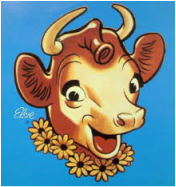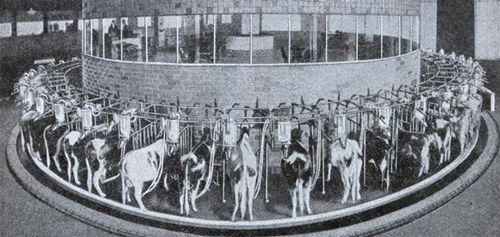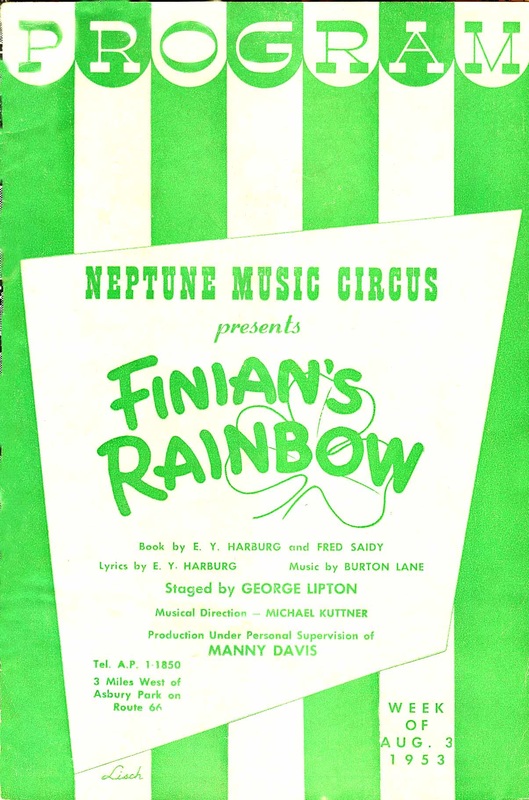The first was the Rotolactor, a system for milking a large number of cows successively by loading them on a rotating platform. Located in Plainsboro, NJ, it was less than an hour’s drive from Shark River Hills and only a few minutes from the Unitarian Fellowship we attended sporadically in Princeton. My sisters and I always clamored to stop at the Rotolactor on our way home, and knowing it made churchgoing more palatable to us, my father often complied. Thus, the Stodolas became Rotolactor regulars.

The doors of the Rotolactor remained open until June, 1971.
* * * * * * * * * * * *
The second round attraction of my Jersey Shore childhood was the Neptune Music Circus. The original summer musical theater-in-the-round, under a circus-style big top, had been built in Lambertville, NJ in 1949 by the colorful actor and impresario St. John (“Sinjun”) Terrell. The format proved hugely popular, and spinoff “tune tents,” including the one in Neptune, quickly sprang up all over the country.
The closing of the Asbury Park Air Terminal 3 miles west of Asbury Park on Rte 66 provided Terrell with a perfect opportunity to bring this unique theater experience to the Jersey Shore. Inspired by Greek amphitheaters, steeply rising rows of folding chairs ringed the circular stage. The sets were of necessity simple and low, and stagehands could be seen running around moving scenery and props. A full orchestra ensured that nothing of the musical impact was sacrificed. Many then-unknown singers and actors got their start in this and similar venues.
The Neptune Music Circus lasted only from 1952 to 1959, but its short lifespan came at just the right time for me - namely, my early adolescence, the mid-1950s, my last couple of years in Neptune. The dates are important because they marked the start of my parents’ treating me something like a grownup. I remember the three of us getting all dressed up for an evening out and then gingerly picking our way across the muddy grounds in our good shoes, pretending we didn’t notice. South Pacific, Finian’s Rainbow, The King and I, The Student Prince (a major tearjerker for me), Oklahoma, Brigadoon - I remember all these performances with nothing but pure joy. My parents later bought the show albums - vinyl, as we now call them - and I danced around the living room of our Long Island home, belting out my favorites - Bali Ha’i, You’ve got to be taught, How are things in Glocca Mora?, Drink, drink, drink to Heidelberg, OHHH-klahoma!



 RSS Feed
RSS Feed